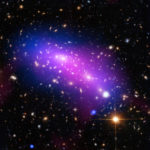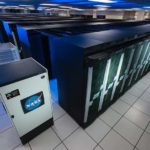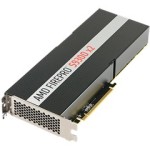Today the PASC17 Conference announced that this year’s plenary presentation will be entitled “Unlocking the Mysteries of the Universe with Supercomputers.” The plenary presentation will be given by Katrin Heitmann, Senior Member of the Computation Institute at the University of Chicago and the Kavli Institute for Physical Cosmology, USA.
Simulating the Earliest Generations of Galaxies with Enzo and Blue Waters
“Galaxies are complex—many physical processes operate simultaneously, and over a huge range of scales in space and time. As a result, accurately modeling the formation and evolution of galaxies over the lifetime of the universe presents tremendous technical challenges. In this talk I will describe some of the important unanswered questions regarding galaxy formation, discuss in general terms how we simulate the formation of galaxies on a computer, and present simulations (and accompanying published results) that the Enzo collaboration has recently done on the Blue Waters supercomputer. In particular, I will focus on the transition from metal-free to metal-enriched star formation in the universe, as well as the luminosity function of the earliest generations of galaxies and how we might observe it with the upcoming James Webb Space Telescope.”
New iBook brings us 72 Beautiful Galaxies
A new iBook by Dr. Stephen Perrenod looks at 72 Beautiful Galaxies. With a Foreword written by our own Rich Brueckner from insideHPC, the iPad “book” offers an interactive way to explore the universe. “In 72 Beautiful Galaxies we take you on a trip from relatively near to very far away in the universe, with images of 72 galaxies – and beyond that you will also see hundreds of galaxies as they are found in clusters.”
Faster Route to Insights with Hardware and Visualization Advances from Intel
An eye-popping visualization of two black holes colliding demonstrates 3D Adaptive Mesh Refinement volume rendering on next-generation Intel® Xeon Phi™ processors. “It simplifies things when you can run on a single processor and not have to offload the visualization work,” says Juha Jäykkä, system manager of the COSMOS supercomputer. Dr. Jäykkä holds a doctorate in theoretical physics and also serves as a scientific consultant to the system’s users. “Programming is easier. The Intel Xeon Phi processor architecture is the next step for getting more performance and more power efficiency, and it is refreshingly convenient to use.”
Supercomputing and the Search for Dark Matter
Over at CSCS, Simone Ulmer writes that Particle physicists using the Piz Daint supercomputer have determined what is known as the scalar quark content of the proton. The research will help efforts to detect and research dark matter.
Video: Discovering the Origin of Stars Through 3D Visualization
This visualization from David Ellsworth and Tim Sandstrom at NASA/AMES shows the evolution of a giant molecular cloud over 700,000 years. It ran on the Pleiades supercomputer using the ORION2 code developed at the University of California, Berkeley. It depicts how gravitational collapse leads to the formation of an infrared dark cloud (IRDC) filament in which protostars begin to develop, shown by the bright orange luminosity along the main and surrounding filaments.
Supercomputing the Mystery of Astrophysical Jets
Over at NICS, Scott Gibson writes that researchers are using XSEDE supercomputing resources to simulate the gaseous outflows from black holes known as astrophysical jets. “These jets can affect galaxy formation and evolution by, for example, heating up the surroundings and suppressing star formation, expelling the surrounding gas and thereby reducing the mass supply to the black hole.”
Simulations of Hydrogen Ingestion Flashes in Giant Stars
“My team at the University of Minnesota has been collaborating with the team of Falk Herwig at the University of Victoria to simulate brief events in the lives of stars that can greatly affect the heavy elements they synthesize in their interiors and subsequently expel into the interstellar medium. These events are caused by the ingestion of highly combustible hydrogen-rich fuel into the convection zone above a helium burning shell in the deeper interior. Although these events are brief, it can take millions of time steps to simulate the dynamics in sufficient detail to capture subtle aspects of the hydrogen ingestion. To address the computational challenge, we exploit modern multicore and many-core processors and also scale the simulations to run efficiently on over 13,000 nodes of NSF’s Blue Waters machine at NCSA.”
Supercomputing Supernova Explosions on Mira
Researchers from Michigan State University are using the Mira supercomputer to perform large-scale 3-D simulations of the final moments of a supernova’s life cycle. While the 3-D simulation approach is still in its infancy, early results indicate that the models are providing a clearer picture than ever before of the mechanisms that drive supernova explosions.
Creating the Largest Map of the Universe with the New AMD FirePro S9300 x2 Server GPU
Researchers at the Canadian Hydrogen Intensity Mapping Experiment (CHIME) will harness AMD FirePro S9300 x2 Server GPUs to analyze extraordinary amounts of data to help create a new, very detailed 3D map of the largest volume of the Universe ever observed. “Not only is the new AMD FirePro S9300 x2 Server GPU the world’s fastest single-precision GPU accelerator, it is also the world’s first professional GPU accelerator to be equipped with High Bandwidth Memory and the first to fully support the Radeon Open Compute platform – an integral element of the GPUOpen compute initiative.”













